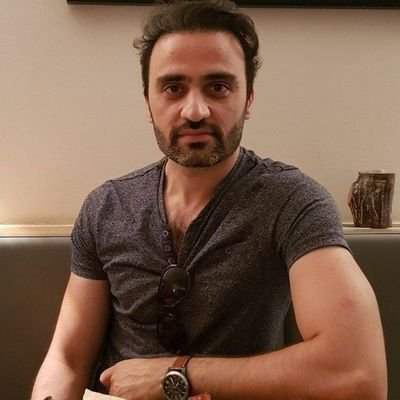Ehsan Golkar
Hello World! My name is Ehsan Golkar. I was born in Isfahan, Iran some years ago. I started my formal education at age 6. In 2007, I successfully graduated with a Bachelor's Degree in Computer Software Engineering in Iran. I continued my journey in Malaysia in 2009, I received my Master's Degree in Artificial Intelligence from National University Malaysia in 2012. I took another step forward by doing my PhD and I graduated in March 2017. In July 2017. I started my postdoctoral fellow position in University of Strasbourg, ICUBE, France. In January 2019, I took a position as Research Associate at Isfahan University of Medical Sciences. In November 2021, I started my postdoctoral position at DiCIPHR, University of Pennsylvania
I am really passionate about my research project. My current research involves medical image understanding and modelling.
Education
2019-2021
Senior Research Associate
Isfahan University of Medical Sciences, Iran
Subject: Retinal registration of FA and OCT images of patients with diabetic retinopathy
2017-2018
Postdoctoral fellow
Stassbourg University, France
Subject: Surgical planning & Image guided surgury
2012-2016
PhD. Medical Image analysis
The National University of Malaysia
Thesis title : Correpondence modelling of respiratory motion modelling from 4D MRI .
2009-2012
Msc. Artificial Intelligence
The National University of Malaysia
Thesis title: Real-Time Curvature Defect Detection on Outer Surfaces.
Retinal Image Registration
Diabetic retinopathy (DR) is a common ophthalmic disease among diabetic patients. It is essential to diagnose DR in the early stages of treatment. Various imaging systems have been proposed to detect and visualize retina diseases. The fluorescein angiography (FA) imaging technique is now widely used as a gold standard technique to evaluate the clinical manifestations of DR. Optical coherence tomography (OCT) imaging is another technique that provides 3D information of the retinal structure. The FA and OCT images are captured in two different phases and field of views and image fusion of these modalities are of interest to clinicians. This research proposes a hybrid registration framework based on the extraction and refinement of segmented major blood vessels of retinal images. The newly extracted features significantly improve the success rate of global registration results in the complex blood vessel network of retinal images. Afterward, intensity-based and deformable transformations are utilized to further compensate the motion magnitude between the FA and OCT images. Experimental results of 26 images of the various stages of DR patients indicate that this algorithm yields promising registration and fusion results for clinical routine.
Cryoablation - Image Guided Srgery
The elimination of abdominal tumors by percutaneous cryoablation has been shown to be an effective and less invasive alternative to open surgery. Cryoablation destroys malignant cells by freezing them with one or more cryoprobes inserted into the tumor through the skin. Alternating cycles of freezing and thawing produce an enveloping iceball that causes the tumor necrosis. Planning such a procedure is difficult and time-consuming, as it is necessary to plan the number and cryoprobe locations and predict the iceball shape which is also influenced by the presence of heating sources, e.g., major blood vessels and warm saline solution, injected to protect surrounding structures from the cold. This resrch describes a method for fast GPU-based iceball modeling based on the simulation of thermal propagation in the tissue. Our algorithm solves the heat equation within a cube around the cryoprobes tips and accounts for the presence of heating sources around the iceball.
Respiratory Motion Compensation
Radiation therapy is one of curative treatment ways of cancerous tumors in the thoracic-abdominal regions and respiratory motion is a major obstacle which is associated with the irradiation therapy. Holding breath during the treatment for example is not a good solution since many patient are not able to hold their respiration for long time. Gated treatment and tracked treatment are suggested to overcome the drawback of respiratory motion. Both methods are able to compensate the respiratory motion effectively; however, it is very difficult to monitor the tumour during the treatment. In addition, extra dose exposure of tracking tumour during treatment is the disadvantage of these methods. One method which has been recently studied is to deduce internal motion using depth camera systems that images the surface of the body during external beam radiotherapy (EBRT), reducing the need for additional imaging and reducing radiation dose.
Contact Us
Contact Info
There are many variations of passages of Lorem Ipsum available, but the et majori have suffered alteration in some form, by injected humour, Domised words which don't look even slightly believable. If you are going to use a pas of Lorem Ipsum, you need to be sure there isn't anything embarrassing hidden in the middle of text.
Lorem ipsum dolor sit amet
Send Message
Your text message sent successfully!
Sorry! Message not sent. Something went wrong!!
